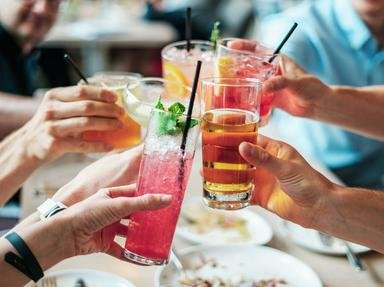
How Well Do You Know Liqueurs/Spirits? Quiz
Match the flavour/country to the drink
In this quiz I have given the country a liqueur/spirit was first commercially produced in, along with its flavour/primary ingredients. All you have to do is match the correct drink with the ingredients/country.
A matching quiz
by heatherlois.
Estimated time: 3 mins.